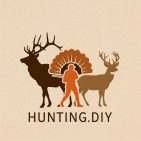Minnesota Hunting Planning & Research Guide
Introduction: Minnesota is a top destination for hunters, offering vast forests, prairies, and wetlands. The state is renowned for its white-tailed deer, black bear, wild turkey, waterfowl, and small game opportunities. Minnesota’s extensive public land system, clear regulations, and strong hunting culture make it ideal for solo and DIY hunters. This guide covers everything you need to plan a successful hunt in Minnesota, including public land access, regulations, licensing, and expert tips for solo adventurers.
Public Land Access in Minnesota
State Lands: The Minnesota Department of Natural Resources (DNR) manages over 5.6 million acres of public land, including Wildlife Management Areas (WMAs), State Forests, and Aquatic Management Areas. Most are open to hunting, with some special regulations. Find maps and details at the Minnesota DNR Public Lands page.
Federal Lands: Minnesota is home to several National Forests (Chippewa, Superior) and National Wildlife Refuges. Each has its own rules—check the USFS and USFWS for hunting info.
Special Programs: Minnesota’s Walk-In Access (WIA) program provides access to private lands enrolled for public hunting. See the Walk-In Access Program for details and maps.
Regulations & Tagging
All hunters must follow Minnesota’s hunting laws, which are updated annually. Key points:
- Review the Minnesota Hunting Regulations before your trip.
- Tagging is required for all big game (deer, bear, turkey, elk). Tags must be attached immediately after harvest and reported online or by phone within 48 hours.
- Hunter orange is required during firearm seasons.
- Some seasons and zones have special restrictions—check the official regulations for details.
Licenses, Permits & Reporting
- Purchase licenses and permits online via the Minnesota DNR License Portal or at authorized agents statewide.
- Nonresidents and residents have different license options; see the fee schedule.
- Some hunts (e.g., elk, bear, special deer hunts) require special permits or lottery applications—apply online during the application window.
- All big game must be reported online or by phone within 48 hours of harvest. Find details here.
Actionable Tips for Solo Hunters in Minnesota
- Scout using the Minnesota DNR Public Lands maps and satellite imagery.
- Waterfowl hunters should explore the state’s many lakes and wetlands for public access opportunities.
- Cell service can be limited in remote areas; always carry a backup map or GPS.
- Let someone know your hunt plan and check in regularly.
- Be prepared for variable weather, especially during late fall and winter seasons.
